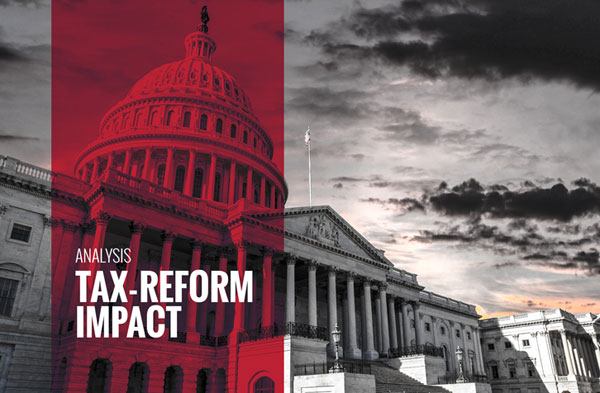✕

Column: industry Tag: US tax reform,tax reform,hotel industry Published: 2017-12-21 14:29 Source: Author:

REPORT FROM THE U.S.—Voting began in Congress this week on a Republican tax-overhaul bill that aimed to resolve the differences between its two versions that passed separately in the U.S. House of Representatives and the Senate in mid-November and earlier this month, respectively.
The recent adjustments in the plan are not expected to materially change its impact on economic growth, which has been the Republican leadership’s chief selling point in driving support from their on-the-fence colleagues and the public.
Ahead of the expected passage of the bill, our colleagues at Oxford Economics, the parent company of Tourism Economics, released an analysis of its expected impacts on the U.S. economy. The results show an approximately 0.4-percentage-point boost to GDP growth in 2018, followed by a smaller lift to growth in 2019, relative to a “no stimulus” scenario. In other words, with the tax cut, GDP is expected to grow 2.8% in 2018, slightly better than the 2.4% growth anticipated without the tax cut.
This fiscal stimulus is primarily driven by net tax cuts for households, and the related effects as consumers spend a portion of their increased disposable income. Reflecting the assumed tilt of the tax cut toward higher-income households, Oxford estimates each dollar of household tax reduction boosts economic output by 25 cents. The remainder of the fiscal stimulus is driven by corporate “expensing measures,” such as allowing companies to deduct capital investment as an expense for tax purposes, and corporate tax rate cuts, offset by revenue raising provisions, such as limits on interest deductions.
Oxford’s analysis, which proceeded passage of the law but aligns closely on key assumptions, is based on an overall tax cut package worth $1.5 trillion over the next decade ($1.4 billion of tax cuts and $100 billion of increased interest on the debt). It also assumes that, with the economy already operating close to potential, the Federal Reserve will respond to offset inflationary pressures by raising interest rates more aggressively.
As a result, the greatest stimulus impact of the tax cut occurs in 2018. Oxford now expects business investment to expand 6% in 2018, with consumer spending growing 2.7%. After the bump in 2018, GDP growth is anticipated to slow to 1.9% in 2019 and 1.5% by 2020.
What does this mean for hotels? A stronger economic context in the near term bodes well for demand, as the pace of business travel is anticipated to strengthen as a result. Discretionary categories, such as travel, are anticipated to benefit disproportionately from greater consumer spending.
An analysis Oxford conducted for American Hotel and Lodging Association, the lodging trade association, earlier this year showed tax policy changes would drive increased demand at U.S. hotels, and corresponding gains in guest spending and tax revenue for local economies. These gains are expected to exceed those for the broader economy as both leisure and corporate travel more directly benefit from increased consumer and corporate spending.
These effects have largely already been incorporated in the U.S. hotel industry forecast?released by STR?and Tourism Economics on 17 November. This forecast, which anticipates 1.9% demand growth next year, assumed the tax-cut legislation would pass by year-end and that GDP growth would improve to 2.4% in 2018.
While the specifics of the tax cut have shifted since that release, and the economic modeling has been adjusted, Oxford’s GDP outlook for 2018 is currently tracking at 2.8%, indicating that the outlook is intact, and even marginally stronger.
STR expects that supply growth will continue to accelerate as expected and that the number of new rooms will grow 2% in 2018. The imbalance of this supply (+2%) and demand (+1.9%) growth will then slow occupancy growth down slightly (-0.2%). It is worth pointing out, however, that occupancies in 2017 will break another record, so even a slowdown means that hotels are still going to be very full going forward.
Average-daily-rate growth expectations for 2018 are healthy (+2.4%) and will continue to drive revenue-per-available-room growth (+2.2%). So, the expectation of the tax-cut impact is that it will drive GDP, which will drive room demand growth, which will drive RevPAR growth for the foreseeable future.
Previous:Recovering Puerto Rico hotels prepare for demand hike
Next:Auberge Resorts Acquires Telluride's Madeline Hotel and Residences
Hot key words
Hot Products
Popular Vendors